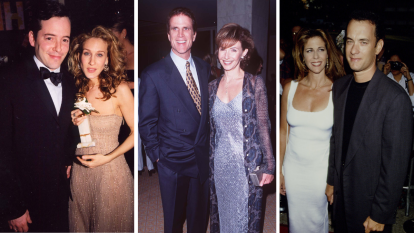Is Someone Gaslighting You? These Are the Warning Signs to Look For
They're sneakier than you'd think.

In the 1944 film Gaslight, a man manipulates his wife into believing she’s crazy, lending a name to this common ploy. While the movie depicts an extreme case of gaslighting, this insidious behavior can be subtle at first, but have seriously negative impacts on one’s relationships, mental health, and self-esteem. Here, experts share the telltale signs that someone is trying to manipulate you, and how to cope with gaslighting so you can take back control.
First, Know the Signs
You’re Not Crazy
“A gaslighter sows seeds of doubt to make you question your sanity, memory, and character,” explains expert Robin Stern, Ph.D., author of The Gaslight Effect (Buy on Amazon, $14.49) . The intention is to shift the power dynamic in a relationship. “A few warning signs are that you’re constantly apologizing, second-guessing yourself, or being told you’re too sensitive,” she says. Gaslighting is a purposeful attempt to make you question your reality, adds Stephanie Sarkis, Ph.D, a psychotherapist and author of Gaslighting: Recognize Manipulative and Emotionally Abusive People — and Break Free (Buy on Amazon, $14.59). “Just knowing there’s a word for what you’re experiencing is the first step to addressing it.”
Stay Connected
To get the upper hand, gaslighters tend to undermine your support system with a tactic called “triangulating,” says Sarkis. “They talk through a third party you care about, like, ‘Your sister said you’re crazy.’ It’s often a lie, so go to your loved one and say, ‘This doesn’t sound like you…’” Instead of questioning yourself, start questioning what this person is telling you and keep people you trust close.
Three Phases
Gaslighters typically use three phases of persuasion to erode your confidence: idealizing, derailing, and discarding, reveals Sarkis. “In the first phase, they flatter you, and in the second, they do the opposite, picking on you for things you can’t change, such as your appearance. This is when you start questioning yourself: What did I do to cause this?” The final “discard” phase often happens after you’ve set a boundary, and they drop you like a child taking their toys and leaving; then they’ll often try to come back into your life. “Just remind yourself that you’re not responsible for their actions,” says Sarkis. “You’re only responsible for taking care of you.”
Love Yourself
Set Boundaries
“Women tell me all the time, ‘I can’t stand that he doesn’t think well of me,’” says Stern. “But no one should feel less-than; equip yourself with phrases you can use in the heat of the moment.” She advises a simple script: “It’s hard for me to focus when emotions are high; let’s stop here,” or “I just don’t want to do this anymore.” “Then talk to yourself kindly: ‘I know what reality is and I have my integrity’ — it’s such an important anchor.”
Feel the Grief
It’s normal to feel grief, not only for having to walk away, but also for losing the person you thought they were, says expert Deborah Vinall, Psy.D., author of Gaslighting: A Step-by-Step Recovery Guide to Heal from Emotional Abuse and Build Healthy Relationships (Buy on Amazon, $11.99). “It’s a tricky kind of grief because you’re mourning the relationship you always wanted and didn’t get,”she says. “But you have to feel it to heal.” It’s also common to feel guilty for not recognizing what was going on earlier, adds Sarkis. “Tell yourself, ‘I’m a healthy person — that’s why I didn’t pick up on X behavior.’” It’s important to show yourself compassion.
Rediscover You
Reconnect with your interests, advises Stern. “What matters to you outside this relationship? If you loved mosaic art projects but were told you were crazy, take them up again!” she urges. “I know a woman who didn’t feel like herself again until she volunteered — folks would tell her, ‘You’re so kind,’ ‘You’re so good at this,’ confirming what she knew but needed reminding of.” Getting to know yourself again will help you move on stronger.













